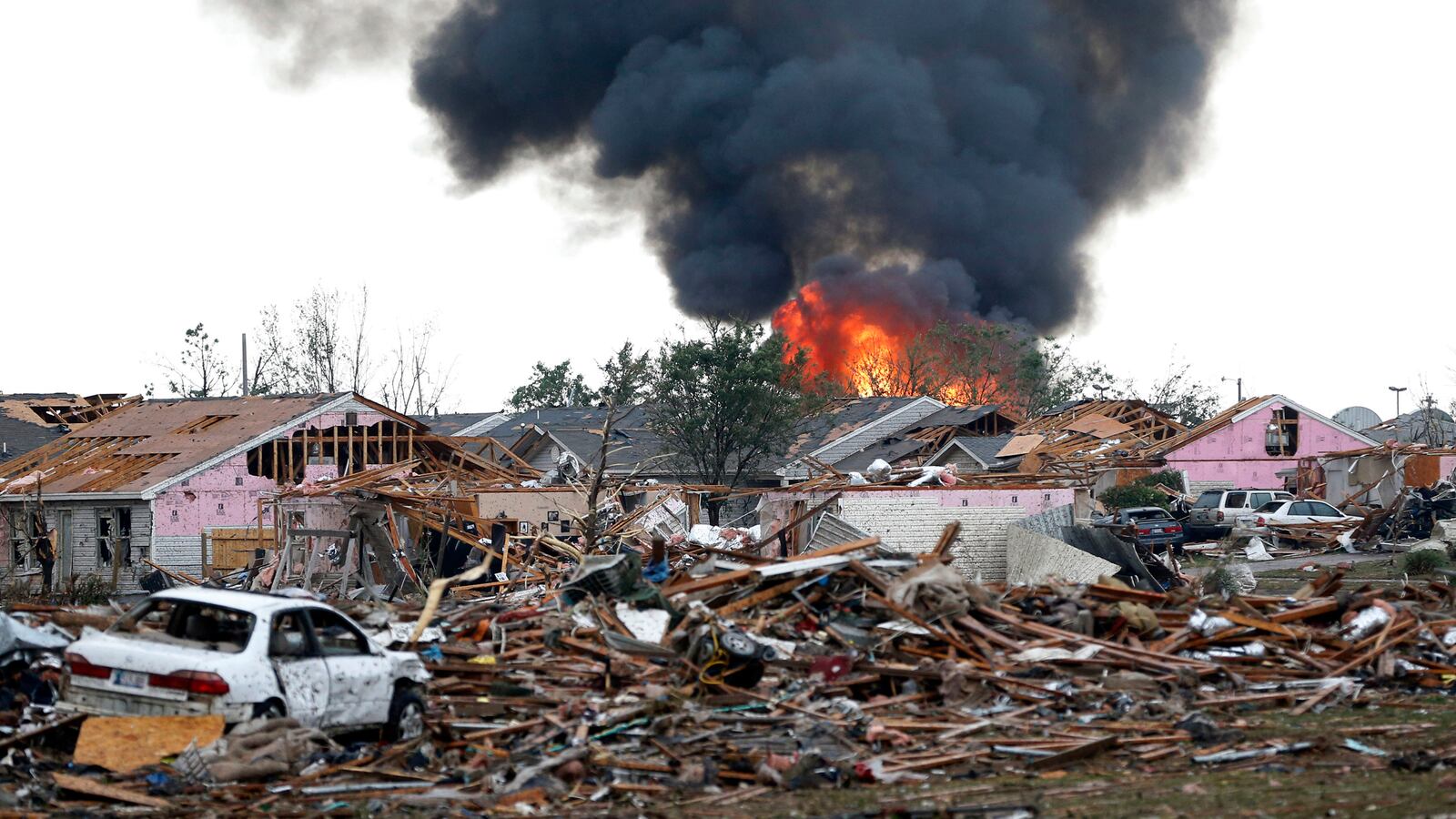The deaths of seven children Monday after a milewide tornado demolished an Oklahoma public school raises anew questions about America’s infrastructure and whether we can do a better job of guarding against the threat of tornadoes and dangerous winds. The short answer is yes: we can indeed save lives and maybe even reduce property damage. But how we go about doing this will make all the difference.

What we do not need, at least for tornado protection, are costly specialized storm shelters—big public structures that would be used only every few years or even every few decades. Nor do we need lotteries—which currently exist in a number of states, including Oklahoma—that give rebates to a few people who build a tornado shelter. This favors the haves who can afford to build a safe room without systematically addressing the problem of saving lives when tornadoes touch down.
To understand the drawbacks of relying mainly on specialized shelters, consider the experience of two towns in Missouri. Two years ago, a tornado leveled a large part of Joplin, Missouri, including the local high school. A $62 million bond issue to replace Joplin High, build three other schools, and create more than 60 temporary tornado shelters recently passed narrowly. Under local laws, it needed 57.14 percent of the votes, and got just 57.64 percent. The narrow margin in a town only recently ravaged by a tornado suggests that it is always going to be politically difficult to amass local support for these kinds of expensive projects.
But while local voters may be reluctant to spend on shelters, the same is not true of Washington. In Webb City, next door to Joplin, the Federal Emergency Management Agency gave $3 million last year to build a safe room at the local high school. It can shelter 3,000 people, if they can get there before a twister strikes. (And that’s a big if, given the short time between a tornado warning and the moment when the doors need to close; just picture how tough it is to get 250 people into a jumbo jet in 40 minutes.) The shelter cost $1,000 per person it can protect from a tornado; building shelters for everyone in Missouri at this rate would cost $6 billion. Based on Missouri’s average of two deaths per year from tornadoes, this measure would save 100 lives over 50 years at a cost of $60 million per life. Even if the shelters last 200 years, the cost would be $15 million for each life saved.
In Oklahoma, Republican State Representative Dennis Johnson, a retail appliance storeowner, said he would like to see consideration of shelters for new and remodeled schools. “In Duncan, where I live, several schools have shelters nearby where children could be taken,” Johnson told me. He said this right after noting that lawmakers had less than 15 minutes warning Monday to get from the legislative floor to the safety of the Capitol basement when the monster tornado struck in suburban Moore, more than a dozen miles away.
The Duncan shelters sit two or more blocks away from public schools, Johnson said. He then agreed with me that moving hundreds of children that distance in the desperate few minutes between a tornado warning and the whirlwind touching down was not a good idea.
Kevin Simmons, a natural-disasters economist at Austin College in Sherman, Texas, said his research suggests tornado shelters for every home would cost at least $20 million per life saved. It may sound harsh, he said, but that is not the best use of funds.
That’s the pessimistic news. The good news, Simmons explained, is that “there might be a smarter way to approach this.” Virtually no ground-level building can withstand the fiercest tornadoes, with winds of more than 200 miles per hour. But it might be possible to design schools and other public buildings to make parts of them less vulnerable. “We need to get architects and engineers together to see if something can be designed” to provide a better level of safety at reasonable cost per life saved, Simmons said.

That view is shared by Bob Roberts, emergency manager for the 40,000-student Tulsa schools in Oklahoma. “I’m not particularly happy with the way we build schools,” Roberts told me. “We build for education—that is good—and in the past few years for energy efficiency, and that’s also good. But we do not think enough about safety.”
Roberts said he was intrigued by security-camera videos of Joplin High when it was hit two years ago: “There were typical school hallways with glass doors at each end so when the tornado struck it turned them into wind tunnels and you could see heavy soft-drink machines moving. If we just put doglegs”—90-degree bends—“at the ends of hallways it would slow down the wind” and the deadly projectiles rocketing through the air.
So far only Alabama, a state not famed for spending money on education, has ordered storm-safe construction of new schools. Carla Percival-Young, an architect with Goodwyn, Mills and Cawood Inc., has designed six new schools for storm safety. “The one thing we do not do is build a stand-alone shelter,” she said, because it costs too much and “we want children into that center in less than 10 minutes.”
A planned addition to Andalusia Middle School in the southern part of Alabama includes an interior multipurpose room designed to withstand deadly storm winds. Its walls are made of thick concrete with rebar reinforcing rods. And the hallways are built with the doglegs that Roberts favors.
The new school also has windows, which are good for education and a sense of well-being. If a tornado approaches, heavy steel shutters inside the building lock in place, letting the winds throw the glass outward, but leaving those inside safe. The shutters do not look like industrial-strength protectors, Percival-Young said, but rather what they will be in normal use: frames for marker boards. She said the costs probably added a half million dollars to the $6 million project. “Costs would come down if we had competition,” she explained, “instead of using sole-source shutters.”
Smart design, competitive markets to lower costs, and an emphasis on creative solutions rather than costly shelters are the way to go. What we should not do is let a few months pass, forget about the problem, and do nothing until the next deadly storm.





